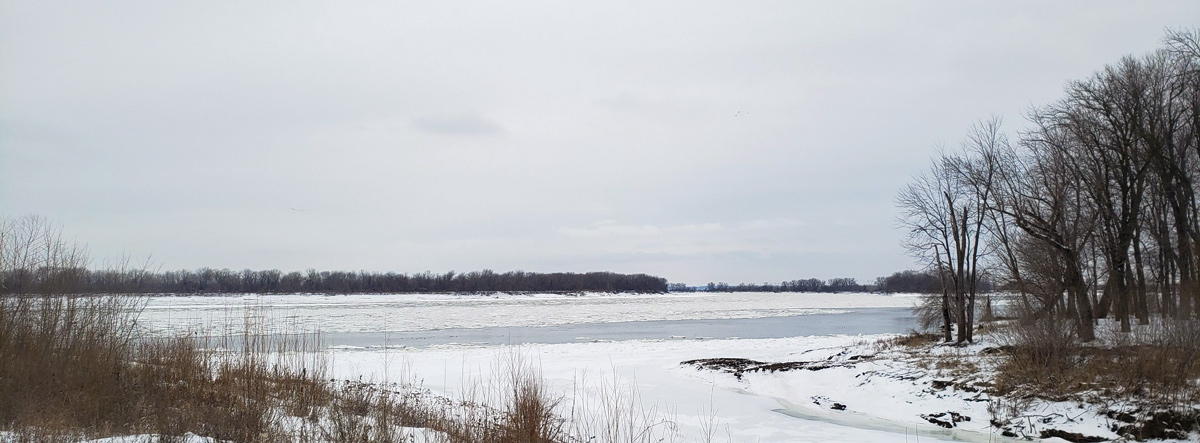In Clark’s last field note until 21 March 1805, he says the morning is fine, and that ice from the Missouri River is passing by their winter camp on the Wood River.
Missouri River Ice
Photo provided by Lewis & Clark State Historic Site, Hartford, Illinois. Used by permission.
The scene above is an approximation of what Clark saw on 9 February 1804. The Missouri River enters on the far side of the Mississippi which is flowing right to left. The Cahokia Creek Diversion Channel enters from bottom right and flows past today’s reconstruction of Camp River Dubois. The actual camp was near the confluence of the Missouri and Wood rivers. All these channels have since moved considerably. See The Mouth of the Missouri.
Passing Ice
a fine morning river Still rise & Ice pass down the greater part out of the Missouries
—William Clark
Weather Diary
Therm at rise
weather wind Therm at 4 Oclk weather wind River 10 above 0 fair after snow N.N.E. 12 above 0 cloudy N.E. rise 2 ft. 8 in. the river raised 2 feet, large quantity of drift ice from Misso[uri]
—Meriwether Lewis[1]To assist the reader, the editor of this web page has omitted the “day of month 1804” column, merged the “River” columns, and spelled out some abbreviations.
Experience the Lewis and Clark Trail
The Lewis and Clark Trail Experience—our sister site at lewisandclark.travel—connects the world to people and places on the Lewis and Clark Trail.
Plan a trip related to February 9, 1804:

Winter Camp at Wood River (Camp Dubois) is a High Potential Historic Site along the Lewis and Clark National Historic Trail managed by the U.S. National Park Service. The site, near Hartford, Illinois, is managed as Lewis and Clark State Historic Site and is open to the public.
Notes
| ↑1 | To assist the reader, the editor of this web page has omitted the “day of month 1804” column, merged the “River” columns, and spelled out some abbreviations. |
|---|



